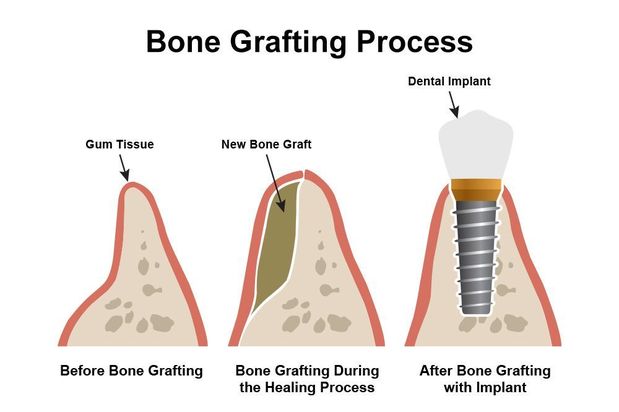Bone Grafting Can Restore a Compromised Jaw
You will experience gradual bone loss in your jaw if you are missing one or more teeth. This can also occur as a result of gum disease or advanced tooth decay. Bone loss can affect your candidacy for dental implants because the jawbone must have enough tissue to support the titanium posts. Bone grafting at our New York, NY, dental practice is a means of adding tissue to the jawbone in preparation for dental implants. We use state-of-the-art technology such as 3D cone beam scanning to determine if you need a bone graft, and to create an effective treatment plan.
Do I Need a Bone Graft?
If you wear traditional dentures, or if you have waited a long period to treat missing teeth, you may be a candidate for bone grafting. After the graft has integrated with your jaw, your dentist can place dental implants. Implant-supported dentures are incredibly secure and offer the patient a better fit and greater comfort. You will not have to worry about slippage: your dentures will allow you to enunciate with clarity, and to enjoy any foods you like.
Bone loss can also cause facial features to appear sunken. A bone graft can improve your appearance following jaw atrophy. In addition, you could be a candidate for a bone graft if you have suffered from a traumatic jaw injury, if you have had tumor surgery, or if you have a congenital defect.
In some instances, patients who have experienced a small degree of bone loss are not candidates for traditional implants, but can receive mini implants without first undergoing a bone graft. Dr. Ernest Robertson will assess your jaw and explain your options during a consultation.

Procedure
Bone grafting is performed under anesthesia to ensure your comfort. If you need a minor bone graft, Dr. Robertson will make a small incision in the gum tissue to prepare the bone surface. He will then augment the area with sterilized, demineralized bone graft granules. He may also use a small amount of your bone, harvested from another area of your body. Larger bone grafts may be secured in place with bone screws and sometimes with plates; bone granules are then used to enhance the graft. The graft is then covered with a special membrane and the incision is closed with sutures. Over the next several months, the bone graft will integrate with the existing bone tissue.
Your recovery time will depend on the extent of treatment. The bone graft will take six to nine months to completely heal and integrate into your jaw. After this healing period, other procedures, such as dental implant placement, can be performed.
Contact Our Office Today
Dr. Robertson was trained at the prestigious Misch Implant Institute. His expertise in implantology has helped many patients to achieve a better quality of life thanks to a restored bite. Contact our office today to schedule your appointment with Dr. Robertson. He will conduct a thorough analysis of your jaws to determine your candidacy for implants, and if necessary, he can determine a bone grafting plan to restore your candidacy.